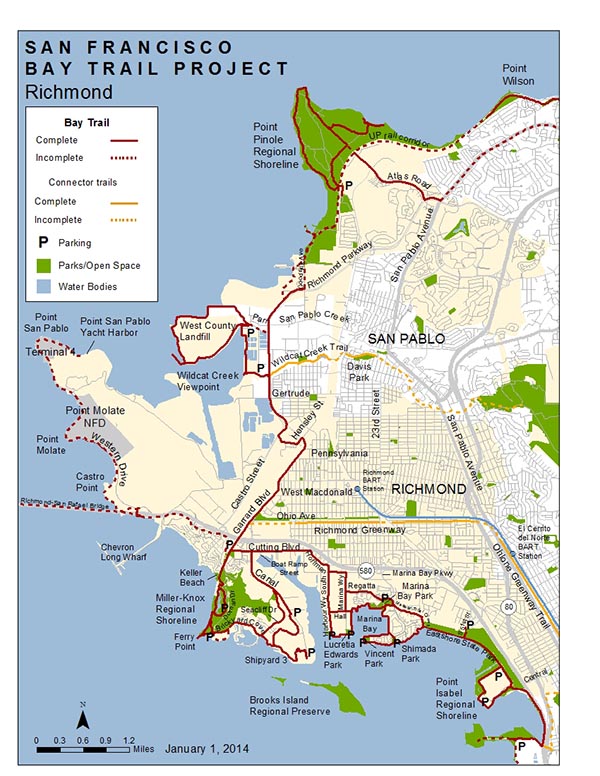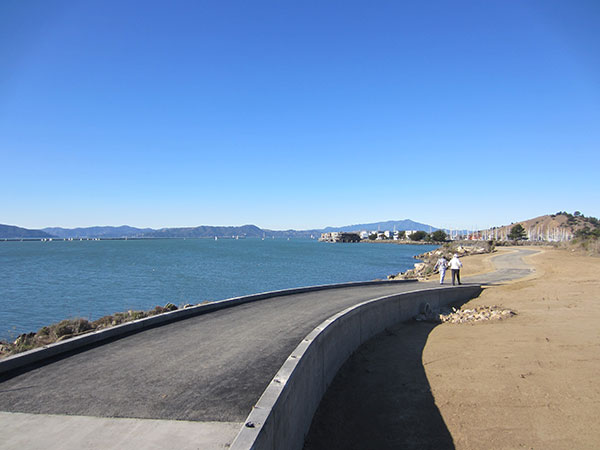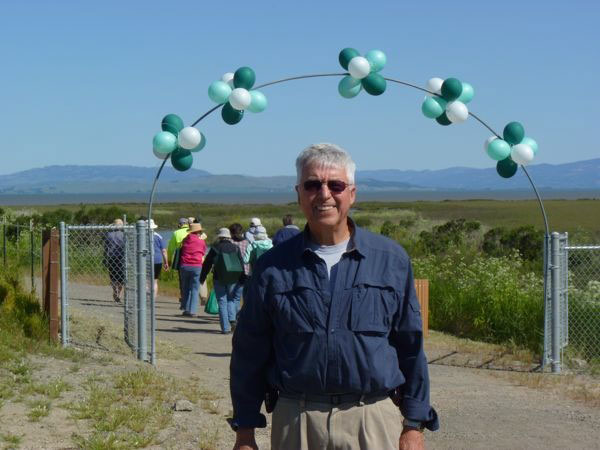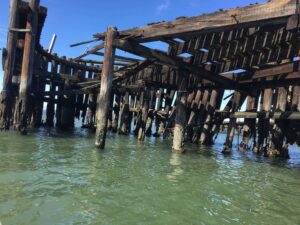This year, the Trails for Richmond Action Committee (TRAC) is celebrating its 15th year as the leading advocacy group for completion of the San Francisco Bay Trail along the Richmond shoreline. TRAC’s chair and co-founder is Bruce Beyaert, a longtime Richmond resident and former Chevron employee whose passion for the Bay, his knack for planning, and his diplomatic approach to problem-solving have made him an extremely effective activist for public access to Richmond’s spectacular — and lengthy — Bay shoreline. Bruce, who was voted the 2010 Cox Conserves Hero for the Bay Area, reflects on his group’s successes, and where the trail leads from here.
BN: Where did you grow up? If you’re not from the Bay Area, what originally brought you here?
I grew up in Galesburg, Illinois, a small town amidst the corn and soybean fields between Peoria and Rock Island. My wife Sandra and I moved to the Bay Area in 1959 immediately after our marriage. She was studying at American University in Washington, D.C. at that time while I was finishing up my M.S.E. in Chemical Engineering at Princeton. The most persuasive selling point of my marriage proposal was the lure of living near San Francisco Bay because I’d received a job offer from Standard Oil of California (now Chevron). We soon moved to an apartment in Richmond so that I could walk to work rather than commuting by car from Berkeley. After a two-year stint in Iran, we returned to the Bay Area in 1967 and bought a house in Point Richmond, where we’ve lived ever since.
BN: What motivated you to form TRAC?
Seven of us formed TRAC in 1999 with the mission of completing the San Francisco Bay Trail in Richmond. Personally, I was drawn to the Bay Trail Project because I love the Bay and enjoy hiking. It was a perfect match.

When TRAC started, Richmond had only 12 miles of Bay Trail fragmented into sections. Our vision was to fill in the gaps to connect Richmond’s necklace of city and regional shoreline parks with one another and with residential areas. We saw an immediate opportunity for the city to require construction of Bay Trail sections as a condition of approval for development projects proposed along the shoreline. We also saw a need to build a constituency of Bay Trail aficionados to support gap closures. To that end, we made presentations to community, governmental, and business organizations and started building an email list which now includes more than 2,000 organizations and individuals.
TRAC also decided that it would be important to enrich the Bay Trail experience. To that end, we formed an interpretive subcommittee which has produced three informative trail guides plus some 50 way finding and interpretive panels.
BN: This year TRAC is celebrating its 15th anniversary. What have you achieved to date, and what still remains to be done?
Richmond now has over 32 miles of Bay Trail completed — the most of any of the 47 cities along the planned Bay Trail route, and almost ten percent of the total Bay Trail miles completed so far. but ten miles of Bay Trail in Richmond remain to be built. More than half of those — and also the most challenging — lie between the Point Richmond neighborhood and the shoreline of Point San Pablo Peninsula. Most of the rest involves trails linking Point Pinole Regional Shoreline with the Bay Trail system.
TRAC has helped build the trail by marshaling sustained support for gap closures plus bringing in over $7 million in grants to the city for designing and building Bay Trail sections, creating access to previously closed expanses of shoreline.

BN: How can people help you complete the trail?
People can help by emailing TRAC and asking to be put on our email list and then responding to occasional requests to weigh in with support. Also, TRAC’s aging Steering Committee is always on the lookout for new talent, especially with skills related to design of trails, obtaining grants, and communications.
BN: What have you learned through TRAC?
I’ve learned at lot about the importance of networking, forging partnerships, and patience. Everything seems to take much longer than expected. In fact, each of the major Bay Trail projects completed over the past several years took a decade or so of discussions, feasibility studies, planning and design, to end up with trails built on land previously closed to the public.
BN: What natural highlights might people see on the Richmond segment of the Bay Trail?

Richmond’s shoreline has an abundance of both natural and cultural attractions. TRAC produced a flyer entitled “Ecotourism on the Bay Trail in Richmond”! My favorite natural highlights include the osprey nesting on top of the Whirley crane next to the SS Red Oak Victory on the Shipyard 3 Trail and the abundance of wintering water birds on the Landfill Loop and along the trail between S. 51st Street and Meeker Tidal Creek bridge on the eastern side of Marina Bay. Many exhibit panels are in place describing the animals, plants and ecosystems along the Bay Trail in Richmond, as well as the human history and transformation of the shoreline over the past 100+ years.
BN: What are some of your favorite spots on the Bay Trail?
My favorite spots are throughout Marina Bay and the section south to 51st Street, Miller/Knox & Point Pinole Regional Shorelines, the section linking Brickyard Cove Road with the SS Red Oak Victory, and the Landfill Loop.
>> View Bruce’s slideshow of the Ferry Point Loop & Shipyard 3 Trail.
>> If you’d like to explore the Richmond segments of the Bay Trail, you can download maps and guides here.
>> To learn more about TRAC and its spring activities, including the grand re-opening of Point Molate Beach Park on April 19, check its events calendar at pointrichmond.com/baytrail/calendar.htm



-300x159.jpg)
-300x201.jpg)
-300x162.jpg)